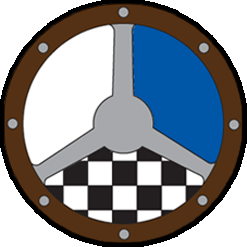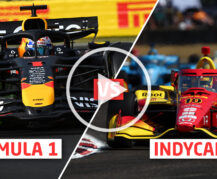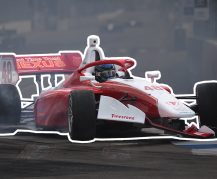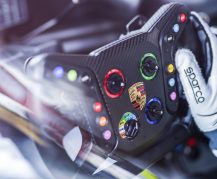From learning the circuit to eating the right things, preparation is key to being a successful racing driver. We have chosen a selection of answers from different drivers in our Ask a Pro series that give you an insight into how to prepare physically and mentally for a race.
As a racing driver fitness and diet is key but how do I know what is enough to eat and the right foods? What’s a typical race day menu for you?
Bruno Senna (Formula E and former Formula One driver): Food is so important in a racing driver’s life. To keep fit, you need to eat well and do lots of training as you know but you also have to find out the foods that agree with your stomach when you’re under stress. I’m a bit peculiar as I have intolerances to rice and eggs, so I can’t eat those around a race weekend but rice and pasta are great sources of carbs to eat before a race, together with either, grilled fish, chicken, turkey and vegetables as you like them cooked. Don’t forget your hydration is at least as important as the food, so drink lots of water or drinks with electrolytes when the day is very hot and you sweat a lot.
You have become known for your composure before a race. Do you have any tips on how to prepare before the start of a race?
Dario Franchitti (Multiple IndyCar and Indy 500 Champion): Yes. Be focused. Don’t be distracted. Don’t be looking around and seeing what’s going on or who’s there. Just focus on what’s going on inside your head, rather than what’s going on outside. You can do some deep breathing, relax yourself and bring your heart rate down. Just compose yourself and think about all those different things that you’re going to have to do during the race. Some people need themselves pumped up; some people need to relax. I prefer to chill out beforehand and get ready that way.
What do you find to be the best way to learn a new track?
Jenson Button (2009 Formula One World Champion): We have the simulator – which is useful for set-up, but also for learning new tracks. But you mentally file away every corner and you just draw upon that resource when you learn a new corner. So you might remember a similar, high-speed, fourth-gear corner and use that as the basis for your approach, but, for instance, it might have a tightening apex and a big kerb at the exit, so you’ll draw on other experiences to fit that into your profile. But you learn them all quite quickly.
Are there any training/hydrating tricks you can suggest that could help someone new to GT racing cope with the cockpit temperatures?
Patrick long (Three-time American Le Mans Series Champion): High cockpit temperatures are never easy! I suggest doing as much hot-weather cardio training as possible. Being acclimated to high heart rates while in hot environments is huge. Also, I try to minimize my exposure to air conditioning in everyday life. In my opinion, the North American culture is obsessive when it comes to A/C, so I really try to stay as far away from any sub-72 degree F environment.
Upon getting to a new track how long does it take to memorize the layout and know what speed you can carry into each turn?
JR Hildebrand (IndyCar driver): Memorizing a track becomes fairly natural over time, but getting it right in the car is a constantly evolving process. The more tracks you race on, the easier it becomes to look at a new circuit and relate the look of new corners to ones you’ve seen before, and have a general idea for what to expect. A lot of us practice a bit of visualization to get ourselves in the right mind set going into practice, qualifying, or whatever the situation might be. Really nailing it once you’re in the car is a tougher prospect because conditions are always changing and there are various aspects of a corner to consider and eventually get right or wrong. That invariably takes some trial and error, so you have to take some risks at first to get yourself in the ballpark, then re-evaluate where you’re at. Can you take another big swing at it, or are you pretty close and just need to chip away? The answer to that question can definitely get you into trouble if it’s wrong, but as a driver in that position, your primary objective is to reach the limit of the car as quickly as possible so that your team can get to work. So it’s a necessary time to be calculated, focused, and rather aggressive. At the IndyCar level, if you don’t have a fairly good handle on how to get around a new track by the end of the first session, you’re probably already behind, so it’s a big deal to get up to speed quickly.
Being a professional racing driver requires not only a lot of physical training and testing, but also travel. What is the best way to deal with things like jet-lag and how do you keep yourself alert and ready for each race?
Bruno Senna (Formula E and former Formula One driver): Jet-lag can be a big problem to frequent travellers. People tend to cope with it differently, but I tend to make sure to get in a gentle training session (swim, run or bike) when I arrive at a place with a different time zone. Other than that, trying to eat light foods and not sleeping during the middle of the day are key to the shortest adaptation period possible.
Training your body is part of keeping fit for the races, but how do you train the brain to keep focused throughout the race?
Dario Franchitti (Multiple IndyCar and Indy 500 Champion): I think a lot of that is built up from years of experience. That’s a great question. You start off with shorter races and you learn to concentrate for that length of time, and then as you move up the ladder and the races are a bit longer, the cars a little bit faster, you learn to concentrate for that whole time, and that goes on. For me, though, the first thing that happened when I drove the next level of car above – whether it was going from Vauxhall Junior to Formula Vauxhall-Lotus or the Formula 3 car or the DTM car or the Formula 1 car or the first time I drove a Champ Car, my brain was just trying to process the speed at which things came at me. It was like somebody took a DVD and fast-forwarded it and you were trying to process that information. That was the first thing to master, and then the focus over the race distance came along and then it was the ability to think about other things while you’re driving at that speed, that was the next thing.
Thanks to you for taking the time to answer questions. How do you mentally prepare yourself before a race? Is there a certain routine that you follow to help keep yourself focused?
Alexander Rossi (GP2 driver and former Formula One test driver): I don’t really have a routine, but in terms of preparation I try to keep things as simple as possible. Obviously my main focus is the car; however, I often have to do PR and sponsor requirements around my time on track throughout the weekend. Before I step into the car, I prepare approximately half an hour before the session goes green. I usually physically warm up via boxing and stretching, while making sure the environment is as calm as possible.
How do you stay focused throughout the course of a race? Do you practice often or have certain techniques you use to prepare?
Will Power (Reigning IndyCar champion): I think you just become very focused as soon as the race starts. You just get in the zone. It’s not something I really practice. I believe it just comes down to years of racing and understanding the sort of focus that you need to run mistake free and always strive to be at that top level.
When you started out in the sport – even though it wasn’t that long ago 🙂 – there wasn’t much emphasis on driver fitness or nutrition programs, for example. When did those elements appear on your radar screen and how important are they in racing these days?
Johnny O’Connell (Four-time class winner at the 24 Hours of Le Mans): Fitness has always been important, and I’ve been training pretty much my entire career. I was probably in my best shape when I was doing martial arts full time, but that also led to injuries. That said, I know that with Corvette we began taking a much closer look at driver conditioning around 2004 when we all worked with a personal trainer to get us all on the same page nutrition and exercise. These days virtually everyone that I know is training as it does make a difference toward the end of a stint or race.
 Road Racing Drivers Club
Road Racing Drivers Club
 Share
Share
















